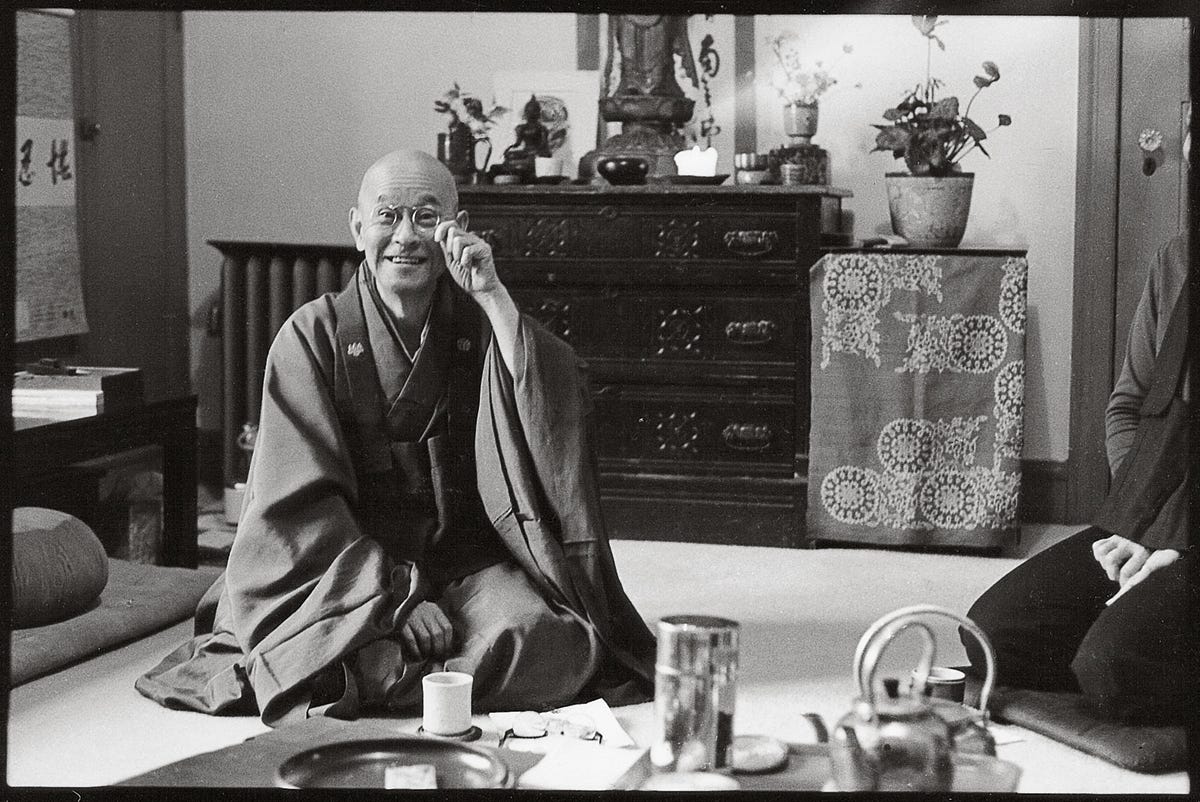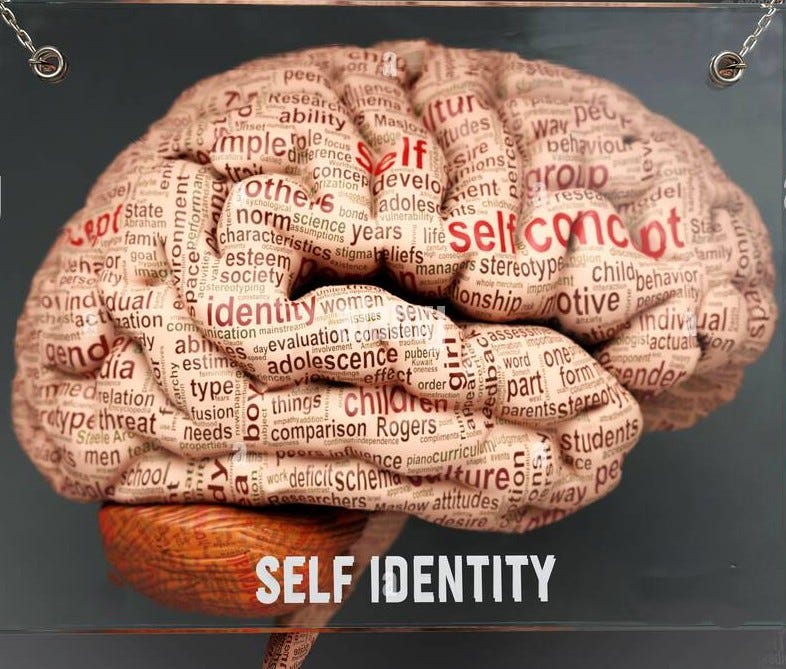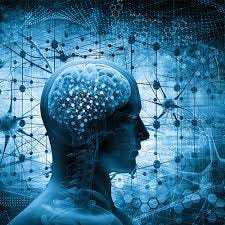For most of our history, we knew the Earth was the center of the universe. We killed and tortured people for saying otherwise. 1
Everything Everywhere All At Once
There is a consensus in Western culture: the individual is their head (brain). The defining feature of the human organism is their subjectivity or world views, i.e., perspectives, views, judgments, likes and dislikes, etc. This human capacity for identification—“I am me”—is now put forward as “I am my brain.” The brain is understood as the most complex system on the planet. In common vernacular, the brain is the storehouse of the mind and the self. Eastern philosophies do not fall prey to dualism. The body and mind are conceptually two things, but an absolute unity. The description is of the body-mind. Much of the Eastern views do not ascribe to absolute metaphysical divisions (e.g., body and mind).
The 2022 absurdist and overall delightful film Everything Everywhere All At Once is a must watch. The movie presents a multiverse with digitally aided time travel. On posters in China, the title used for the film translates to Wild and Unrestrained Imagination. The set up of the movie is that there is a multiplicity of worlds that are cybernetically connected across a digital network.
In line with Western culture, one’s personal essence is the egocentric self. This self as a separate thing is transmitted from a retro Bluetooth headset via a networked connection. Therefore, the self travels from one body to another body. However, the movie and other sci-fi series such as Black Mirror perpetuate a metaphysical myth: the idea that “I” possess myself as a separate “self.”
The actress Michelle Yeoh plays the protagonist Evelyn. She co-owns a laundromat with her husband and lives with him and her traditional father. Evelyn is critical and ashamed of her adult daughter Joy who has a girlfriend and lacks motivation. Eventually, Evelyn transports via a computer network that links people from across an infinite number of universes. Evelyn’s self is a “thing” (her head). This suchness manifests everywhere all at once in each of her bodies across universes. She arrives in each body as the self of ego-consciousness. Humans misunderstand this self as separate from the physical body. Evelyn’s task is to connect with her other selves—the different versions of herself in other universes—across the multiverse. Her task is to prevent a powerful being from destroying the multiverse. The powerful being is one version of her daughter Joy.
In Everything Everywhere All At there are many different modes used to traverse time-space, i.e., “verse jumping.” A command center team and its operatives engage in a probability assessment of possible behaviors across each universe. An aggregate of behaviors is calibrated for the least probable behavior in the social context. The person must perform an atypical action that is statistically improbable. For example, giving oneself five self-inflicted papercuts in succession, landing one’s anus atop a large phallic dildo, snorting a live housefly up your nose, peeing oneself, sitting on the cracks of the cushions that connect on a couch, etc. The “jump” is from one body to another. Each of Evelyn’s life choices creates a new alternative universe, which enables people to access the skills, memories, and bodies of their parallel-universe selves.
EGO-CONSCIOUSNESS AS “REALITY”
Someone cannot be separate from this world. Some action cannot exist without the background of the whole world, and some thing cannot be apart from other things. 2 —Suzuki Roshi, Not Always So

The presupposition of Everything Everywhere All At Once is that ego-consciousness is separate from the body as opposed to an embodied process. Ego-consciousness is not apart from the body nor of the body. Ego-consciousness is something we do, not a “thing” that we are. Ego-consciousness creates a sense of “self” that is a separate “thing” from the body, but this is an illusion. There is only body-mind (emptiness). Western culture declares that there is a solid and separate “you” inside your head. In other words, you feel like a chariot (body) with you as the driver (mind/brain). In the film, the subjectivity of ego-consciousness makes the self a “thing” to be possessed and operated across a digital network. The movie is fun, because then “it” (Evelyn/ego) traverses space-time.
What is presented is that the ego or self of ego-consciousness “jumps” from one physical body to another physical body. The main character’s self travels into another body that resides in a different universe. The person does this by detaching from ego. However, the illusory ego is not a “thing” that is separated by time-space. There is this sense of form (no-thing) to the self, but it is ignorance to confuse conceptual designation with “reality.” Buddhist enlightenment is direct experience of everything at once (suspension of ego-consciousness).
The mode of transmission of ego-consciousness as a “thing” illustrates the myth of Cartesian dualism (“me” and “the world”). Subjectivity of a constructed entity (self) as an object confuses the psyche into believing the construction (self) has a form as a thing. “I have the self as I have property.” Possession of the self. The logical conclusion is that the self can “jump” from body to body.
LOVE AS RELATIONAL EMBODIMENT
The only thing I do know… is that we have to be kind. Please. Be kind… especially when we don’t know what’s going on.
Everything Everywhere All At Once
Everything Everywhere All At Once concludes with a message of kindness. However, the term “kindness” is overused. The film conveys a Buddhist recognition of friendliness, which is the relational expression of “emptiness.” Evelyn appropriately responds to murderous rage with love. This intuition manifests as unrestrained imagination and not simply neuronal activity of the brain. Her appropriate response (intimacy) alters the hearts of her violent persecutors by making physical contact with their bodies. Not their brains, but their relational bodies. A symbiotic experience of love (not-two) and emotional connection ends fear and despair. This experience of not-two is as if the bottom of the bucket fell out: everything at once. Love and creativity prevail over the relational-hollowness-ness of Ego (non-thing).
From a relational perspective, pleasure is a combination of desire and joy. Pleasure does not require a separate sense of self. Ego is an obstruction to this direct experience (no self) of pleasure. We “lose ourselves” in joy as we forget we are a separate body; we lose the sense of the other as otherness. Desire involves the intensification of bodily and sensual experience (self). Joy occurs when we leave the ego-boundary of the body (loss of self). Joy and desire are unified as intensely pleasurable. In contrast, the virtual world now provides endless desire (self-focused) in absence of a relational body. Therefore, the “connection” online offers no pleasure (e.g., doomscrolling).
Most of us know love and yet we cannot come close to a proper explanation. In fact, language does an injustice to love. Our brain cannot explain this universal phenomenon. But this much is true, we do not love with our head. We can only desire joylessly and endlessly. Instead, love is a relational or embodied experience. The love of loving requires the momentary disappearance of the egocentric “I.” The ego is nowhere to be found and yet our own awareness is cosmically everything everywhere at once.
A24 and IAC Films present; a Gozie Agbo production; a Year of the Rat production; in association with Ley Line Entertainment; a Daniels film; produced by Joe Russo, Anthony Russo, Mike Larocca; producers, Daniel Kwan & Daniel Scheinert and Jonathan Wang; written and directed by Daniel Kwan & Daniel Scheinert. Everything Everywhere All at Once. Santa Monica, California: Lionsgate, 2022. Everything Everywhere All At Once.
p. 141, Suzuki, S. (2003). Not always so: Practicing the true spirit of Zen. HarperCollins: New York.








